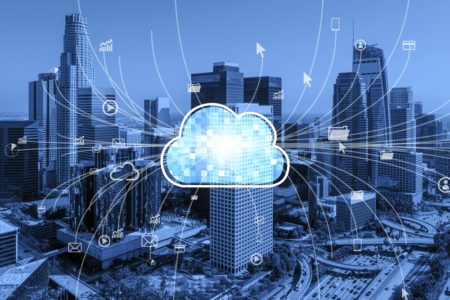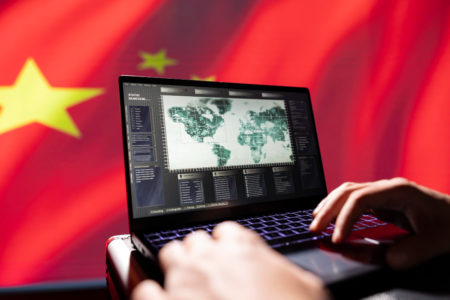By Khwaish Hingad
In an interview, Mr. Naveen Kumar, Indian Administrative Service (IAS) who is serving as the Revenue Secretary/ Relief Commissioner, Govt. of Uttar Pradesh speaks on how, as Relief Commissioner, the task of providing aid to people affected by both natural and man-made disasters comes with a unique set of challenges. He and his department are implementing the ‘Chakbandi.AI’ model and integrating emerging technologies like GNSS, Generative AI, and Blockchain to expedite the entire land consolidation process.
Q1. How do you manage the dual roles of Relief Commissioner and Consolidation Commissioner effectively in balancing immediate relief and long-term land consolidation goals?
Ans. To effectively manage the dual roles of Relief Commissioner and Consolidation Commissioner, ensuring a balance between immediate relief and long-term land consolidation goals, I employ a multi-faceted approach. In disaster management, we have streamlined relief processes through automation, implemented DBT for quick compensation to farmers for crop damages, and maintained a responsive RAHAT call centre. Proactive data integration and the APADA PRAHARI app enable swift disaster response.
Inland consolidation, we’re implementing the Chakbandi.AI model and integrating emerging technologies like GNSS, Generative AI, and Blockchain to expedite the process. The development of a Farmer Passbook, an online platform for dispute resolution, and sensitizing ground-level officials contribute to efficient land consolidation. This comprehensive strategy ensures both immediate relief and long-term land consolidation objectives are effectively addressed.
Q2. What are your vision and key initiatives for optimizing land use and rural development through the Consolidation Commissioner’s office?
Ans. The vision for optimizing land use in Uttar Pradesh is a comprehensive approach that encompasses several critical components. One primary objective is to consolidate the scattered land holdings of farmers, facilitating the arrangement of drainage systems, road networks, and land allocation for public purposes.
Additionally, there is a strong emphasis on transitioning to paperless governance to streamline administrative processes and reduce paperwork. This initiative also seeks to minimize legal disputes related to land, promoting fair and efficient land consolidation practices. Furthermore, the vision prioritizes trust, transparency, and participation, engaging stakeholders in the decision-making process and fostering collaboration among various parties involved in land management.
To modernize the system, emerging technologies are being actively explored through Expressions of Interest (EOI), with Proof of Concepts (POCs) executed in collaboration with industry partners. Finally, lessons from visits to other states, including Punjab, Haryana, and Delhi, and interactions with educational institutions like IIT-Roorkee, contribute to a well-rounded approach to land consolidation and governance in Uttar Pradesh.
Q3. What are the biggest opportunities you see for using technology to improve disaster relief efforts?
Ans. The role of technology in disaster management extends beyond the immediate protection of people; it also plays a crucial role in extracting valuable information and data that can be instrumental in mitigating the impact of future natural disasters. In this context, a significant initiative underway is the establishment of a Climate Resilient Observatory (CRO) in Uttar Pradesh. This observatory is designed to incorporate several essential features to enhance disaster preparedness and response.
One pivotal feature of the Climate Resilient Observatory is the incorporation of an Early Warning System. This system is designed to provide timely alerts and notifications, enabling authorities to take proactive measures and evacuate vulnerable areas when impending natural disasters, such as floods or cyclones, are detected. Such early warnings can save lives and reduce the damage caused by these events significantly.
Another key aspect of the CRO is its capability to collect real-time data and statistics. This real-time data collection enables a dynamic assessment of the situation during a disaster. It allows for immediate response coordination and a better understanding of the disaster’s impact, aiding in the allocation of resources and assistance to the affected areas efficiently.
The integration of technology, such as the establishment of the Climate Resilient Observatory, is a significant step in disaster management in Uttar Pradesh. It not only aids in protecting people during disasters but also provides a wealth of data for future predictions and strategies to minimize the impact of natural disasters, ultimately safeguarding the well-being of the state’s residents.
Q5. How do you ensure collaboration with other government departments to address relief and land consolidation issues in a coordinated manner?
Ans. To ensure effective collaboration with other government departments for addressing relief and land consolidation issues in a coordinated manner, several strategies are employed:
Amendments in Policies/Acts Focusing on Disaster Risk Reduction (DRR): Policies and acts are amended to prioritize Disaster Risk Reduction (DRR). This ensures that relief and land consolidation efforts are aligned with a common goal of minimizing the impact of disasters and consolidating land resources efficiently.
Departmental Schemes for Disaster Impact Mitigation: Government departments design their schemes and initiatives to be capable of handling and minimizing the impact of disasters. This proactive approach ensures that each department contributes to relief efforts in a coordinated manner.
Utilization of Family ID for Long-Term Benefits: Implementing a Family ID system enables long-term benefits for disaster victims. This ID helps in tracking and providing support to affected families beyond immediate relief, ensuring a more holistic approach to recovery.
Involvement of Various Government Entities and Technologies: Collaboration is established with various government entities, including IT & Electronics, the India Meteorological Department (IMD), the National Disaster Management Authority (NDMA), the Survey of India (SOI), Remote Sensing and Aerial Coverage (RSAC), as well as academic institutions like IITs/IIITs. This multi-agency approach incorporates emerging technologies into the ecosystem, enhancing data collection, analysis, and response capabilities for relief and land consolidation efforts.
By implementing these strategies, government departments can work together in a coordinated and synchronized manner to address relief and land consolidation issues, ultimately leading to more efficient and effective outcomes.
Q6. As Relief Commissioner, what are the biggest challenges you face in providing aid to people affected by natural and man-made disasters?
Ans. As Relief Commissioner, the task of providing aid to people affected by both natural and man-made disasters comes with a unique set of challenges. These challenges encompass:
Connectivity & Communication: The ability to establish and maintain effective communication networks, especially in remote or disaster-affected areas, is a fundamental challenge. Ensuring that timely information reaches those in need and that coordination with various response teams is seamless is crucial.
Resources Availability: The availability of essential resources, including food, clean water, shelter, and medical supplies, can become strained during large-scale disasters. Ensuring a sufficient and timely supply of these resources is a significant challenge.
Logistics and Supply Chain: Managing the logistics and supply chain efficiently to transport resources to disaster-stricken areas, often under adverse conditions, is a constant challenge. Roadblocks, damaged infrastructure, and disrupted transportation systems can hinder the swift delivery of aid.
Weather and Environmental Conditions: Dealing with adverse weather and environmental conditions, such as heavy rains, extreme temperatures, or polluted air, can complicate relief efforts. Adapting to these conditions while providing aid is a significant challenge.
Large Geographical Area of the State: Uttar Pradesh’s vast geographical expanse presents a considerable challenge. Coordinating relief efforts across such a large area with diverse needs and vulnerabilities demands effective planning and deployment.
Better Coordination with Local Police: Ensuring effective coordination with local law enforcement, especially in situations of law and order breakdown during disasters, can be challenging. Collaborative efforts with the police are essential to maintain order and security.
Lack of First-Aid & Hospital Facilities: The shortage of first-aid and hospital facilities, especially in remote or disaster-affected regions, poses a significant challenge. Prompt medical care is crucial during disasters, and addressing this scarcity is essential.
In the role of Relief Commissioner, addressing these challenges requires a well-structured and adaptable disaster management framework. Collaboration with various government departments, timely decision-making, and the utilization of technology are vital in ensuring that aid reaches those affected by natural and man-made disasters in a coordinated and efficient manner.
Q7. What are your visions for the future of the Revenue Department in UP?
Ans. The future vision for the Revenue Department in Uttar Pradesh (UP) comprises several key objectives. First and foremost, the department aims to achieve 100% automation of manual processes, which will not only streamline operations but also enhance efficiency and reduce the likelihood of errors.
Additionally, the department intends to incorporate emerging technologies, particularly within the Consolidation and RAHAT departments, to improve the delivery of services to citizens. Collaborating with academia and industry partners is another pivotal aspect of this vision, as it can bring fresh perspectives, research capabilities, and innovation to the department. The vision also includes the development of a Sue-Moto approach to service delivery, ensuring a more proactive and citizen-centric approach.
Leveraging AADHAAR and Family ID systems is another critical component of the vision, which can enhance the accuracy and security of data, ultimately leading to more efficient processes and improved service delivery. In summary, the Revenue Department in UP envisions a future marked by automation, technology integration, collaboration, proactive service delivery, and the effective use of identification systems, all aimed at modernizing and optimizing the department’s operations for the benefit of the citizens of Uttar Pradesh.













